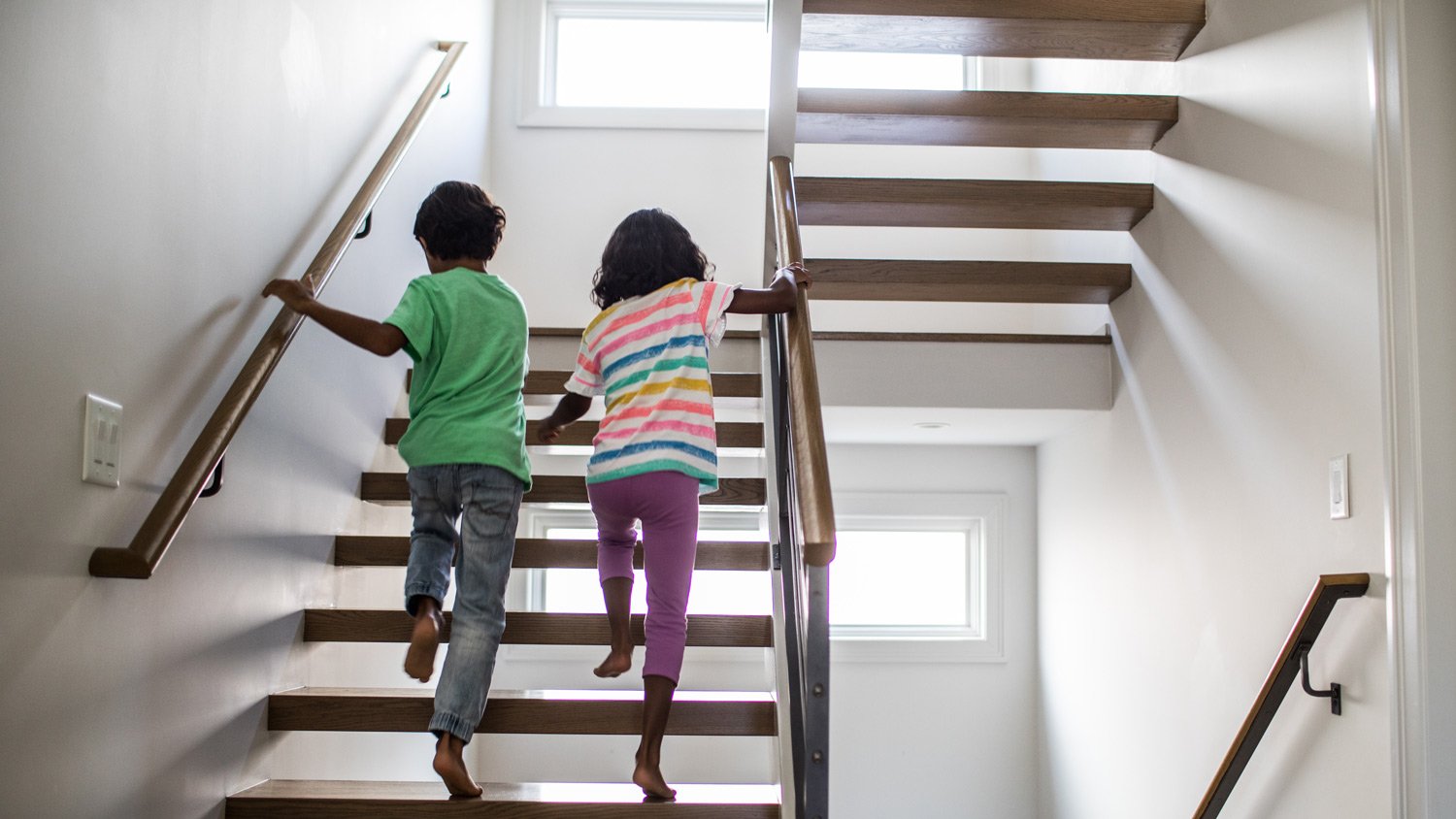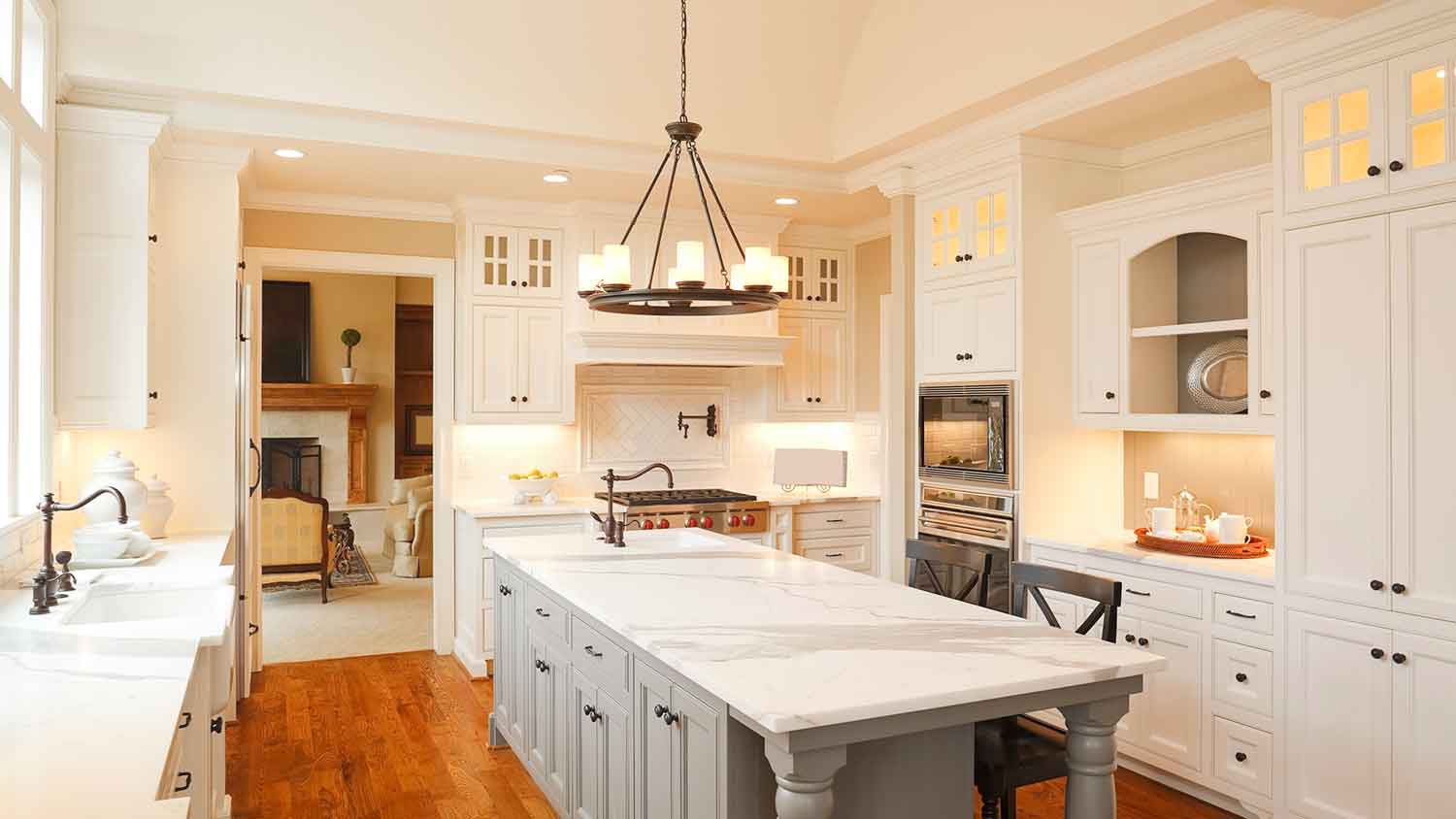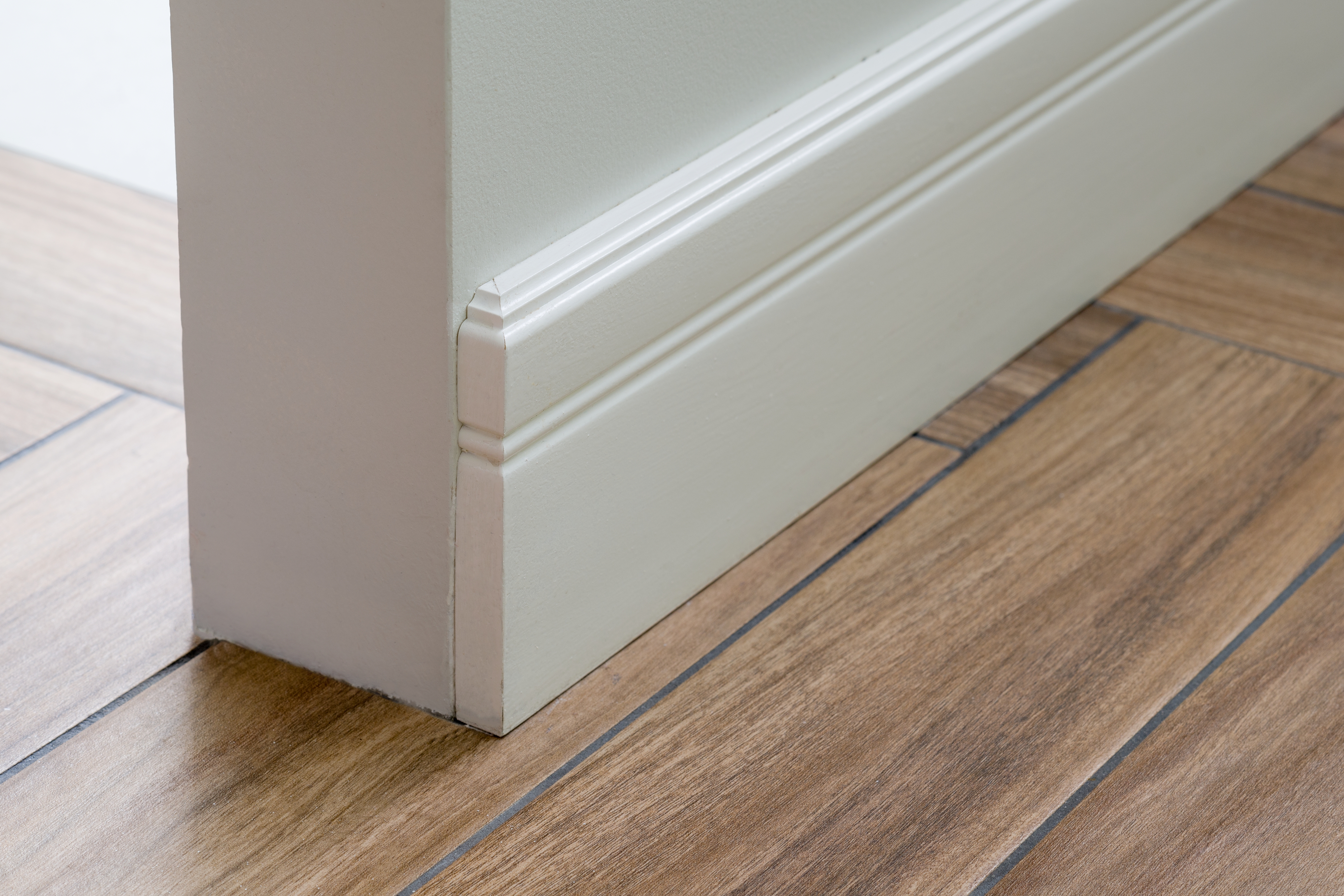
When calculating the cost of building a treehouse, consider the size, types of materials, and design. This guide will help you figure out what to budget.
Woodworking costs depend on your project and location. Check with a local pro for your specific job.
Stair railing installation involves adding or replacing handrails and supports to boost safety and style on your staircase.
The biggest cost factors are the material you choose and the total length of railing required.
Upgrading your stair railing can increase home value, especially with attractive, modern, or code-compliant designs.
Professional installation costs $50 to $150 per hour and helps ensure your railing is sturdy, safe, and meets building codes.
Checking warranty options and understanding maintenance needs can help you avoid unexpected long-term costs.
This article was created using automation technology and thoroughly fact-checked and edited by an Angi Editor in accordance with our AI policy.
The cost to install stair railing ranges from $500 to $6,000, with an average project costing $2,500. Prices depend on the length of railing needed, the material you choose, and the complexity of your staircase. Expect to pay between $50 and $650 per linear foot, depending on design and material.
Updating your stair railing not only improves safety but also adds a fresh look to your home. This guide will help you understand what impacts cost, what to expect during installation, and how to make the most of your investment.
The size and layout of your staircase play a major role in the total cost to install stair railing. The longer the railing and the more complex the staircase (such as curves or extra landings), the more you’ll spend on both materials and labor. Most standard straight staircases require less railing than L-shaped, U-shaped, or curved designs.
Staircases with multiple flights, turns, or landings will need additional rail length, connectors, and support posts, which increases both the amount of material and time required for installation. In residential homes, stair railing projects can be as small as a single 6-foot straight run or as large as a multi-story, 40-foot curved staircase.
| Staircase Type | Size (Lin Ft.) | Average Cost Range |
|---|---|---|
| Straight | 6–12 | $900–$3,000 |
| L-Shaped | 10–20 | $1,200–$4,500 |
| U-Shaped | 16–30 | $2,000–$5,500 |
| Curved or spiral | 15–40 | $2,400–$6,000 |
The type of railing you select has a significant impact on the total cost to install stair railing. Homeowners can choose from wood, metal (including iron, steel, and aluminum), glass, cable, composite, or vinyl railings. Each material varies in price, installation complexity, durability, and appearance:
Wood railings are classic and affordable, while metal railings offer strength and a range of styles.
Glass and cable railings create a modern look but often require specialized installation.
Composite and vinyl are low-maintenance options.
Always ensure your chosen railing type meets local building codes for safety and spacing. Popular stair railing styles include traditional, modern, ornate, minimalist, and fully custom designs. The more intricate and customized your railing, the higher the final cost.

| Railing Type | Average Cost per Lin. Ft. | Pros | Cons |
|---|---|---|---|
| Wood | $50–$200 | Warm look, easy to stain/paint | Can require refinishing, less durable than metal |
| Metal | $100–$600 | Durable, many styles, low maintenance | Can rust (iron), higher labor cost |
| Glass | $200–$650 | Modern look, unobstructed views | Expensive, needs frequent cleaning |
| Cable | $100–$600 | Sleek, modern, durable | Higher installation cost, may need tightening |
| Composite | $80–$250 | Low-maintenance, weather-resistant | Limited styles, less traditional look |
| Vinyl | $60–$150 | Budget-friendly, low maintenance | Less sturdy, fewer design options |
Where you live can influence the cost to install stair railing. Labor and material prices are often higher in urban areas due to demand and cost of living, while rural regions may have lower rates. Additionally, local building codes, permit requirements, and inspection fees can vary, affecting your final bill.
Some regions also have preferred materials or styles, which can drive up prices for certain types of railings. For instance, coastal areas may favor rust-resistant materials like aluminum or stainless steel, which cost more than standard wood.
Several factors can affect the cost to install stair railing beyond just material and size. Let’s break down the main cost drivers.
Stair railing installation is handled by skilled carpenters, metalworkers, or general contractors. Labor costs range from $50 to $150 per hour, depending on your location and the installer’s expertise. Some pros charge a minimum service fee, especially for small jobs.
Complex designs, curved stairs, and custom railings require more time and skill, increasing labor costs. Removing old railings may be included in the labor quote or billed separately. Labor for standard straight stairs is often less expensive than for spiral or multi-story projects.
In many areas, you’ll need a permit to install or replace stair railings, especially if the project affects structural elements or safety. Permit costs range from $50 to $500, depending on your municipality. Permit requirements can add time to your project, as you may need inspections to confirm code compliance.
Upgrades and custom features will increase the overall price. Decorative balusters, newel posts, handrail end caps, and custom finishes each add to the material and labor total.
If you want integrated lighting, ADA-compliant handrails, or extra safety features, expect to pay more. Hardware like brackets, screws, and anchors also factor into the final cost.
Several additional factors can affect the cost of railing installation, including:
Project complexity, such as custom designs, multiple landings, or unusual angles, increases both labor and material costs.
Accessibility plays a role: Tight spaces, exterior locations, or multi-story installations take more time and effort.
Site preparation, including the removal of old railings and repairing stair structures, can add to your bill.
Delivery fees, post-construction cleanup, and debris disposal are sometimes included, but not always.
Custom projects, design or architectural fees, and additional inspections for code or HOA approval may be necessary.
Beyond installation, there are other expenses to keep in mind as you plan your stair railing project.
Many manufacturers and installers offer warranties for stair railings, covering defects in materials or workmanship. Standard warranties range from one to ten years, depending on the material and installer.
Extended warranties may be available for an extra fee. Be sure to check what is and isn’t covered—some warranties exclude normal wear, weather damage, or improper maintenance.
Routine cleaning and care vary by material:
Wood railings need regular dusting and may require refinishing or resealing every few years, costing $100 to $500 annually.
Metal railings are easier to clean but may need occasional repainting or rust treatment.
Glass railings require frequent cleaning to stay smudge-free.
Homeowners can handle basic maintenance, but professional upkeep ensures longevity.
Sales tax applies to stair railing materials and labor in most areas, but rates vary by state and city. Some regions tax only materials, while others tax the entire installation. Check with your local tax authority to determine if your project will incur sales tax.
Upgrading stair railings can impact your homeowners' insurance premium, especially if you’re improving safety or meeting new code requirements. Contractors should have liability insurance for the installation. If you’re doing the work yourself, check your policy to make sure you’re covered for any accidents or injuries during the project.

Some homeowners consider installing stair railings themselves to save on labor. DIY costs include materials, tools, fasteners, and any safety equipment you’ll need. For a basic straight staircase, materials might cost $300 to $1,000, with tool rentals or purchases adding $50 to $200.
By handling the project yourself, you avoid labor charges, but you’ll need carpentry or metalworking skills, accurate measurements, and the right tools. DIY projects can take a full weekend or longer, and mistakes can lead to safety hazards, code violations, or damage that voids warranties or insurance.
Professional installers bring experience, specialized tools, and knowledge of local codes. While hiring a local stair railing pro costs more upfront, the investment is worthwhile for complex, curved, or multi-story railings—or if you want a flawless, code-compliant finish.
For a standard 10-foot straight railing:
DIY: $400 to $1,200 (materials, tools, no labor)
Pro: $1,200 to $2,500 (all-inclusive, labor and materials)
Sometimes, stair railings can be repaired rather than replaced. Repairs include tightening loose handrails, replacing damaged balusters, or addressing minor wear. If the railing is extensively damaged, doesn’t meet code, or is outdated, replacement is the safer and more cost-effective choice.
If your railing is under warranty, repairs may be covered. Use the 50% rule: If repair costs exceed half the price of a full replacement, it’s best to replace. Repaired railings may not last as long as new ones, especially if the underlying material is old or weakened.
Repairing a stair railing costs $100 to $1,000, depending on the issue. Replacing the entire railing is more expensive but offers improved safety, appearance, and longevity.
Installing new stair railings can deliver a strong return on investment (ROI). Modern, code-compliant railings improve both safety and style, making your home more appealing to buyers. Enhanced safety is especially important for families with children or seniors, and universal design features can make your home more accessible.
Compared to other home improvements, stair railing upgrades offer a solid combination of function and aesthetics. Decorative or high-end railings can boost perceived value, while basic upgrades ensure your home stays market-ready and safe.
Keep your stair railing installation costs within budget with these helpful tips:
Get multiple quotes from licensed stair railing installers.
Choose budget-friendly materials that meet safety standards.
Limit custom features or decorative upgrades to control costs.
Schedule installation during off-peak seasons for possible savings.
DIY demolition or removal of old railings, if safe and feasible.
Maintain existing railings to extend their lifespan before replacement.
Consider prefabricated railing kits for simpler installations.
Home is the most important place on earth, which is why Angi has helped more than 150 million homeowners transform their houses into homes they adore. To help homeowners with their next project, Angi provides readers with the most accurate cost data and upholds strict editorial standards. We extensively research project costs to develop the pricing data you see, so you can make the best decisions for you and your home. We rely on reputable sources, including the U.S. Bureau of Labor Statistics, academic journals, market studies, and interviews with industry experts—all to ensure our prices reflect real-world projects.
Want to help us improve our cost data? Send us a recent project quote to [email protected]. Quotes and personal information will not be shared publicly.
From average costs to expert advice, get all the answers you need to get your job done.

When calculating the cost of building a treehouse, consider the size, types of materials, and design. This guide will help you figure out what to budget.

The cost to install wainscoting depends on labor, materials, and square footage. This guide will help you budget for your next project.

Whether you need to heat your home for the winter or simply enjoy lighting a fire occasionally, it's helpful to know the cost of a cord of wood in your area.

Discover how to install hand railing on a wall in a few simple steps to add safety and style to your staircase that meets or exceeds building code standards.

Crown molding provides a timeless style to your space. Learn how to install crown molding on your cabinets to give your home a simple but impactful upgrade.

Baseboard trim protects your walls and adds character to your home. Our guide explains common baseboard trim sizes and how to choose the right one.